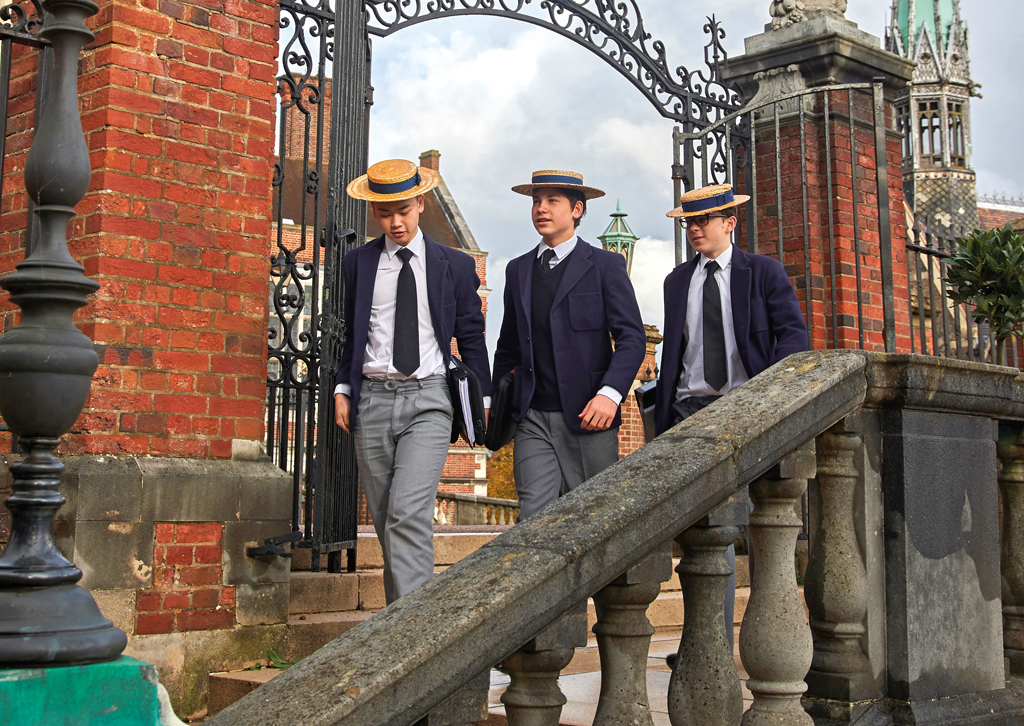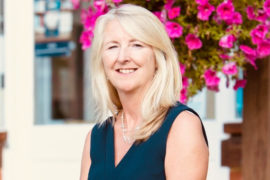Scholarships and Bursaries Explained
By
5 years ago

The System Explained
Eleanor Doughty demystifies how scholarships and bursaries work.
If you’re an 11-year-old from a sea fishing family in Banff, Scotland, you have a unique opportunity: a discounted place at the Duke of Edinburgh’s alma mater, Gordonstoun, could be yours. So too if you’re the child of a clergyman or woman: you’re eligible for 65 per cent off the £11,195-a-year school fees at Rossall School in Lancashire. Welcome to the world of scholarships and bursaries, a seemingly opaque universe of charity names, financial revelations and apparently impossible jargon.

According to the Independent Schools Council’s 2019 census, 34 per cent of pupils educated at independent schools currently receive help with their fees, at a cost of £1bn. The majority of this is provided directly from the schools themselves. But fee assistance comes in different shapes and sizes. ‘First thing’s first,’ says Susan Hamlyn, director emerita of the Good Schools Guide, ‘is to establish the difference between scholarships and bursaries. At some schools, the former can refer to a portion of money off school fees, the result of exceptional ability, awarded for excellence in art, music, or academia. This amount can vary from five to 100 per cent.’
Bursaries are usually hosted by charitable foundations or private individuals, offering financial support singularly, or on top of a small – possibly honorary – scholarship, according to means testing. ‘Parents often come to us in a state of complete misunderstanding about what scholarships are, what bursaries are, and on what basis they are given,’ says Hamlyn. ‘Some feel that they are a government initiative and they have an entitlement to them, some say they will move anywhere if they can get a scholarship, or bursary, or a combination of both. The information is out there, they just don’t know where to find it.’
‘It is understandable,’ Hamlyn adds, ‘that parents aren’t armed with all of the facts. Whether or not you were independently educated yourself, things have changed. Parents doing this for the first time,why should they know?’
What can make things tricky is that different schools give different names to their individual types of fee assistance. One school might offer a ‘scholarship’ worth ten per cent, whereas at its neighbour down the road, it might be 50 per cent. At Shrewsbury School, the four Butler scholarships are worth up to 30 per cent of fees, while at Harrow School each of the means-tested bursaries is linked to a scholarship. These are generally worth five per cent. ‘If you can afford to pay full fees, then you do,’ says Dr Philippa Davies, the school’s awards and sixth-form registrar.

Scholarships at Harrow can be awarded for academic excellence, sport, and the arts. ‘In a lot of cases the scholarship is just a nice title, and a little bit of financial help,’ says Davies. ‘In some cases it’s the access to bursary funding.’ Other schools apply a similar structure. At Fettes College in Edinburgh, 100 per cent means-tested bursaries are available to any pupil who passes the entrance exam, with academic, music, art, sport and piping scholarships offered with up to ten per cent off fees. In other cases, the scholarship is honorary. Alongside its academic scholarships at 11+ and 13+, Ampleforth offers the Basil Hume scholarship to students ‘who display excellence in art, music, design & technology, sport or theatre’. These awards may support a further means-tested bursary application, but are essentially a recognition of talent and ‘top candidates may be awarded ten per cent remission on school fees’.
At Roedean, the 650 girls-strong boarding school on the edge of the South Downs near Brighton, a variety of scholarships and bursaries are offered. As well as the conventional academic and practical specialisms, the Brighthelm scholarships provide access to girls from the state sector living within a 20-mile radius of the school. ‘This is for a day place,’ says Diana Banham, Roedean’s director of admissions. ‘They are for top academic girls in either year seven or year 12, and are essentially means-tested scholarships. We are looking for children performing at the highest level but who couldn’t necessarily afford the fees.’
Once upon a time, the Brighthelm was given out on a more limited basis: ‘there were three Brighthelm girls in the school at any one time, and they were 100 per cent funded’. Over the years, this has changed. ‘Now a number of awards are up to 50 per cent, with some higher ones that allow more access for more girls.’
In the last ten years there has been a shift away from scholarships towards bursaries, says Hamlyn. ‘This is partly down to governmental pressure, and partly down to justifying charitable status. Increasingly schools are running appeals to raise money for bursaries – they’ve got to, if the sector is going to survive.’
Awards given are not just limited to academic excellence. Other criteria also applies, as schools look for specific individuals to add to their student body. Those who transfer from the state sector have some unique opportunities. At Eton College, the Andrew Lloyd Webber Foundation’s music scholarship is awarded to an outstanding musician from a state school ‘whose family could not otherwise afford the school fees’.

Local awards are also on the rise. At Stowe, a limited number of Buckingham Day bursaries are available for prospective day pupils, while at Harrow, the sixth-form award funds boys from the London Borough of Harrow up to 100 per cent fee remission. ‘The school is proactively trying to increase local applicants in need to try and encourage students to see this as a place that is accessible,’ says Davies. In these cases, it’s not always the parents who take the helm during the admissions process – sometimes it is the children who drive the application. ‘Given that the child is nine or ten, that is quite an extraordinary thing. I see at least one of those every year,’ adds Davies.
Other groups of families also qualify for fee assistance. In 2016/17 the Ministry of Defence spent £80m on the continuity of education allowance (CEA). Although, as one colonel laments, ‘who knows whether that will be around in five or ten years time?’ But discounts for pupils whose parents are serving members of HM Forces are still available at a wide range of schools nationwide. At Badminton School in Bristol, 20 per cent discounts are offered, while at Cheltenham College, discounts range from 15 to 25 per cent depending on the parent’s rank.
At Ardingly College in West Sussex, parents ‘who are not in need of financial assistance may wish to waive the fee remission element of a scholarship’. In Rutland at Uppingham school, the same applies: ‘the parents of some would-be scholars may not be in immediate need of financial assistance and such parents may waive their right to emoluments, passing it on to another pupil.’ If required, this can be reversed: ‘parents who waive their rights to emoluments can subsequently reinstate them if their circumstances change.’ ‘For gaining a scholarship is not always about the money,’ says Banham. ‘It’s about trying to get recognition for their children’s talents and skills.’
But for many it is very definitely about the money and this can make an enormous difference. Roedean’s full boarding fees for sixth-formers can be as much as £38,565 a year, but ‘40 per cent off on a weekly boarding place for London parents brings us in line with London day school prices.’

Getting the finances right for families from the get-go is crucial. At The Whitgift Foundation, which runs three schools in Croydon, the support offered is broken down by income. The foundation offers assistance to families earning up to £93,000 a year, and can halve its £20,640 day fees for a household with an annual income of £63,000. ‘Parents come to us worried about being able to pay the fees for the next seven years,’ says Banham. ‘We reassure them that if their circumstances change unexpectedly for the worse, they will be able to submit an application for a bursary to gain financhial support.’ At Roedean, parents can pay by monthly direct debit with no fee, ‘after all, most people do their budgets monthly,’ says Banham.
Parents shouldn’t worry when approaching their school of choice, says Hamlyn. ‘They are often frightened of going to a school that they are keen on in case they say the wrong thing. Of course, it may well be that their child is exactly the kind of child that the school is looking for.’ But the important thing for parents to realise is that the schools are as keen to give out bursaries and scholarships as parents are to secure them.
This article was originally published in Scholarships & Bursaries 2019/20. Read about the difference between a scholarship and a bursary here.



